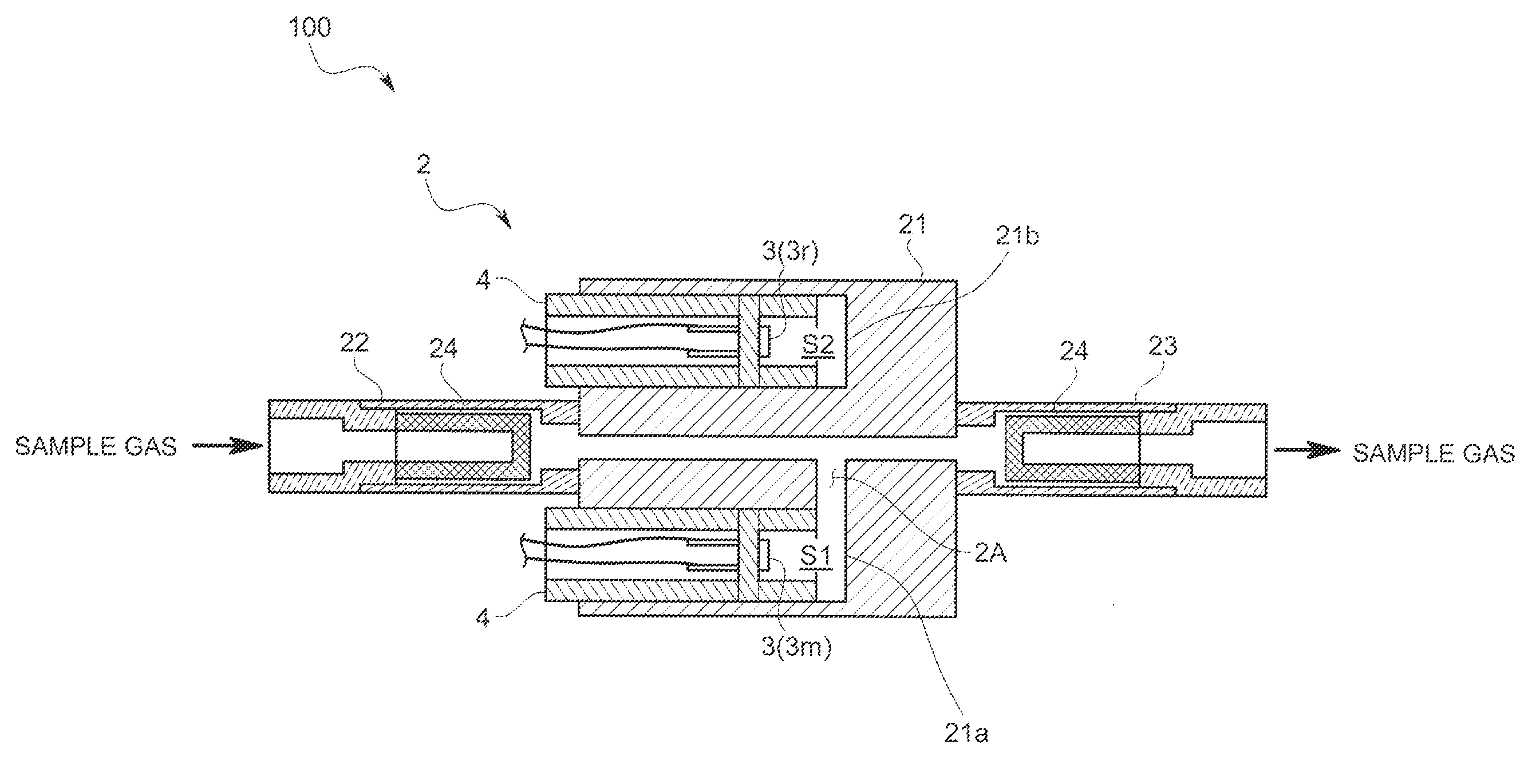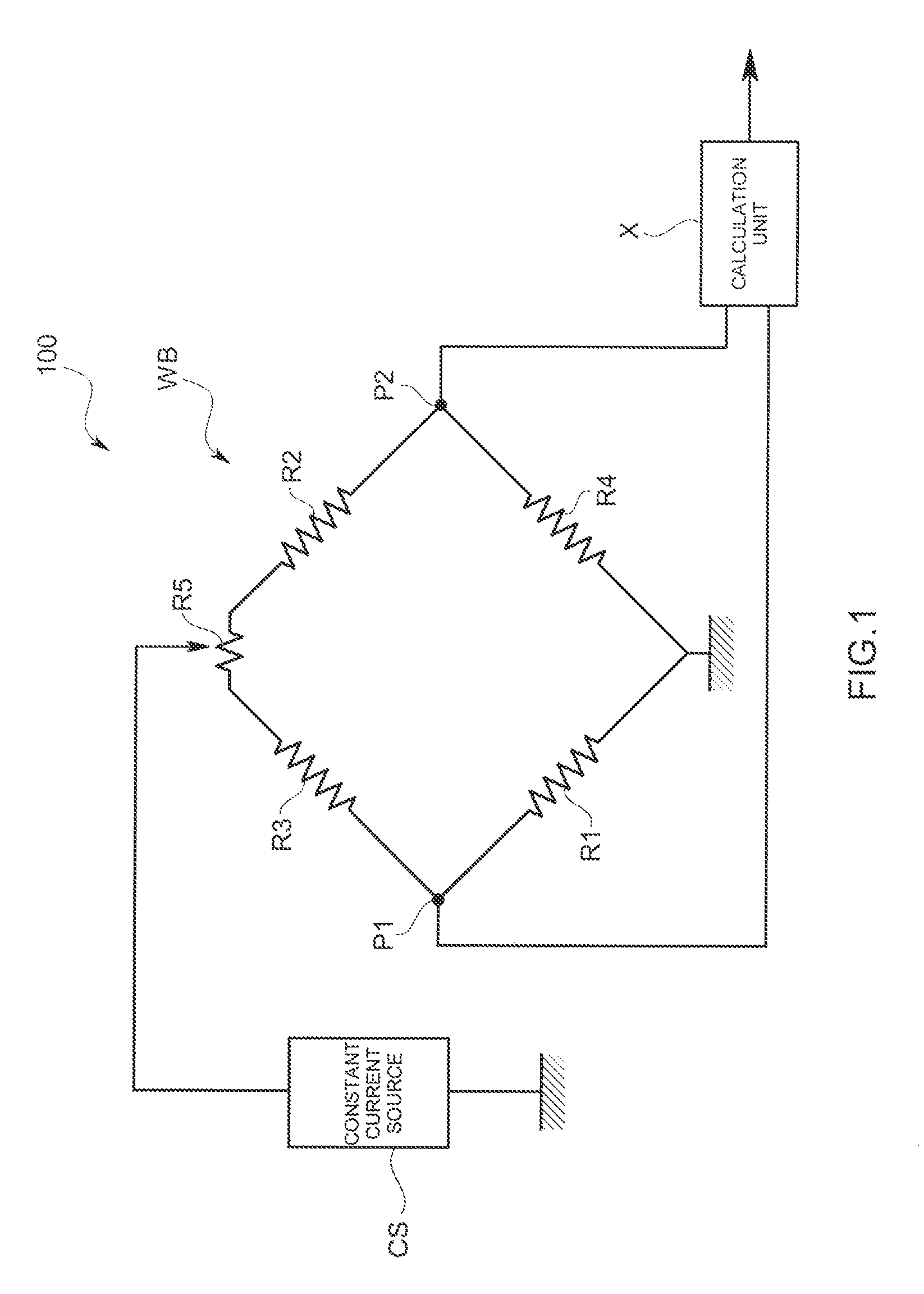Thermal conductivity sensor
a technology of conductivity sensor and thermal conductivity, which is applied in the direction of instruments, chemical methods analysis, separation processes, etc., can solve the problems of increasing costs, aggravating the signal-to-noise ratio, and difficulty in obtaining correct measurement, so as to reduce the production errors of the enclosure, the effect of improving the sensitivity of measuremen
- Summary
- Abstract
- Description
- Claims
- Application Information
AI Technical Summary
Benefits of technology
Problems solved by technology
Method used
Image
Examples
Embodiment Construction
[0021]Hereafter, one embodiment of a thermal conductivity sensor according to the present invention will be described with reference to the drawings.
[0022]A thermal conductivity sensor 100 according to the present embodiment detects the thermal conductivity of a sample gas containing a combustible and / or corrosive component and measures the concentration of a predetermined component in the sample gas based on the thermal conductivity. Here, the combustible and / or corrosive component may be, for example, water (H2O), an oxygen (O2) gas, a sulfur oxide (SOX) gas, a nitrogen oxide (NOX) gas, a hydrochloric acid (HCl) gas, an ammonia (NH3) gas, a hydrogen sulfide (H2S gas, or a hydrogen (H2) gas.
[0023]First, a measurement circuit of the thermal conductivity sensor 100 will be described with reference to FIG. 1.
[0024]This measurement circuit is constructed with two measurement resistors R1 and R2 that are disposed to be in contact with a sample gas and two reference resistors R3 and R4 t...
PUM
 Login to View More
Login to View More Abstract
Description
Claims
Application Information
 Login to View More
Login to View More - R&D
- Intellectual Property
- Life Sciences
- Materials
- Tech Scout
- Unparalleled Data Quality
- Higher Quality Content
- 60% Fewer Hallucinations
Browse by: Latest US Patents, China's latest patents, Technical Efficacy Thesaurus, Application Domain, Technology Topic, Popular Technical Reports.
© 2025 PatSnap. All rights reserved.Legal|Privacy policy|Modern Slavery Act Transparency Statement|Sitemap|About US| Contact US: help@patsnap.com



